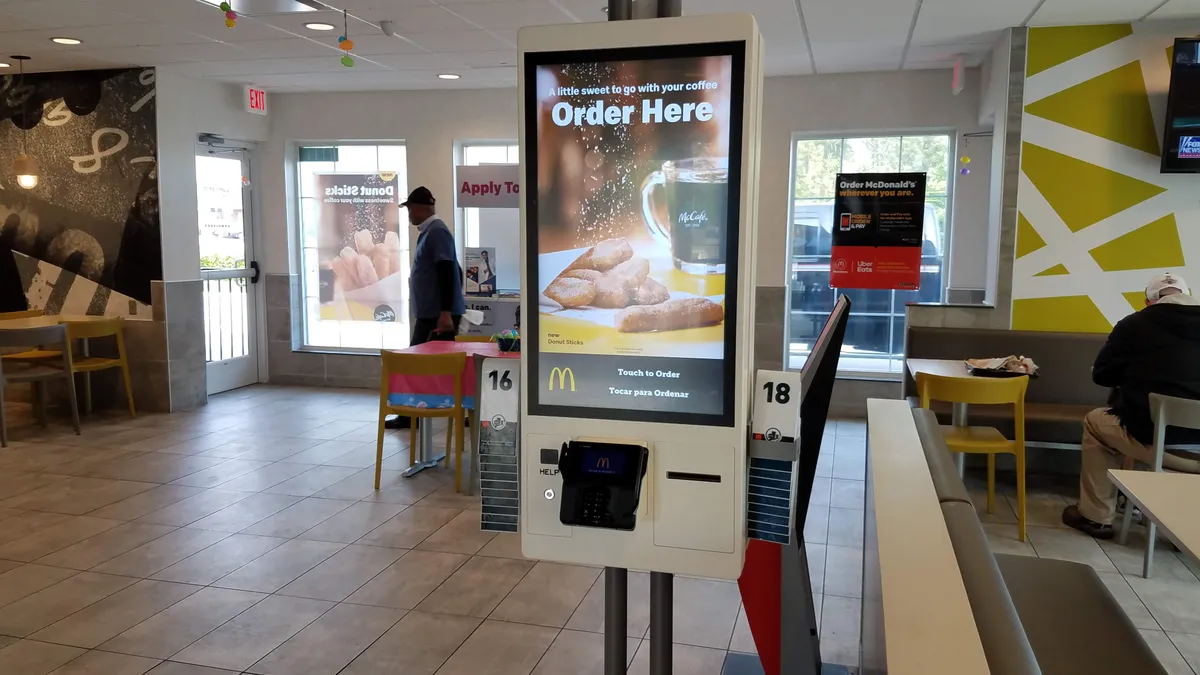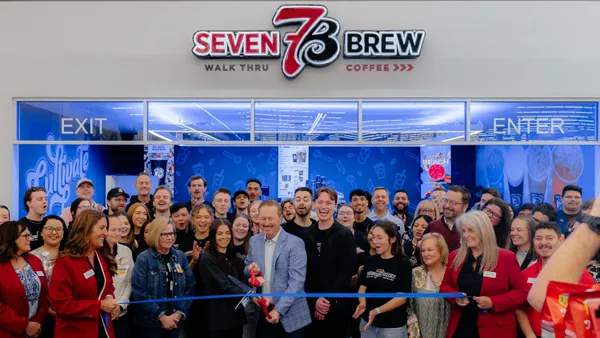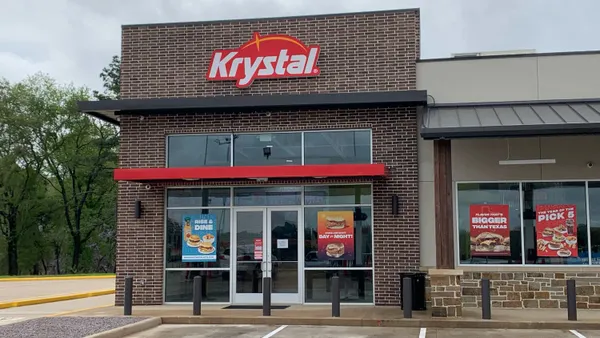Dive Brief:
- McDonald's is updating its self-service kiosks in its company-owned stores to increase accessibility for people with vision impairments, according to The Wall Street Journal.
- The upgrades, which are expected to be completed by the end of the year, will be added to all existing kiosks in California and 25% of existing kiosks in company-owned locations in the U.S., according to a press release.
- The rollout is part of a collaboration with the National Federation of the Blind, previously announced in May, to increase the accessibility of the kiosks with screen-reading software, tactile keypads and the ability for customers to connect headphones or earbuds into the machines to place their orders by responding to audio prompts.
Dive Insight:
While McDonald's kiosks, which were initially introduced in 2015, were in compliance with accessibility laws, customers with visual impairments often said when they pressed a button for more assistance, no one came to assist, according to The Wall Street Journal. McDonald's will also work on training staff at its company-owned restaurants, in collaboration with NFB, to assist McDonald's guests who are blind. The company will add accessibility functions to any new kiosks installed in the U.S. after July 1, 2021, including those sold to franchisees.
"McDonald's prides itself on fostering an inclusive restaurant experience for all," Kelsey Hall, senior manager of global digital accessibility at McDonald's, said in a press release. "This inclusive kiosk solution ensures blind and low vision customers can independently order their McDonald’s favorites for themselves, their families, and their friends."
While these enhancements are limited to a select amount of stores, other franchisees across the world have been working to boost accessibility. In 2019, McDonald's in Israel rolled out a voice navigation app to help blind customers, as well as those with dementia. Earlier this year, McDonald's in India launched EatQual, an initiative to assist people with limited hand mobility, to add optional packaging that allows people to hold onto food with one hand instead of two as needed in standard packaging.
Other chains are also boosting accessibility in their stores. Starbucks partnered with Aira earlier this year to provide customers with visual impairments free access to the technology, which connects diners with a remote agent via a smartphone to describe the visual surroundings. The company also added large print and Braille menus during the summer. The chain also has at least nine stores where employees are proficient in American Sign Language.
While plaintiffs' attorneys have targeted restaurants for Americans With Disabilities Act violations of their websites in the last few years, several have also highlighted problems with fast food restaurants themselves, including issues related to the drive-thru. In 2019 a lawsuit was filed against Taco Bell claiming it discriminates against people who can’t drive due to vision impairments because drive-thru was the only channel available to order late at night. While this case was voluntarily dismissed, it still highlights how QSRs can be vulnerable to ADA actions and potentially costly lawsuits.
According to The Wall Street Journal, over 6,300 lawsuits were filed in federal court during the first half of the year alleging that various public and commercial spaces violated the ADA. Seyfarth Shaw LLP expects this number to surpass 12,000 by the end of the year, the most since 2013, when it began tracking these lawsuits.















